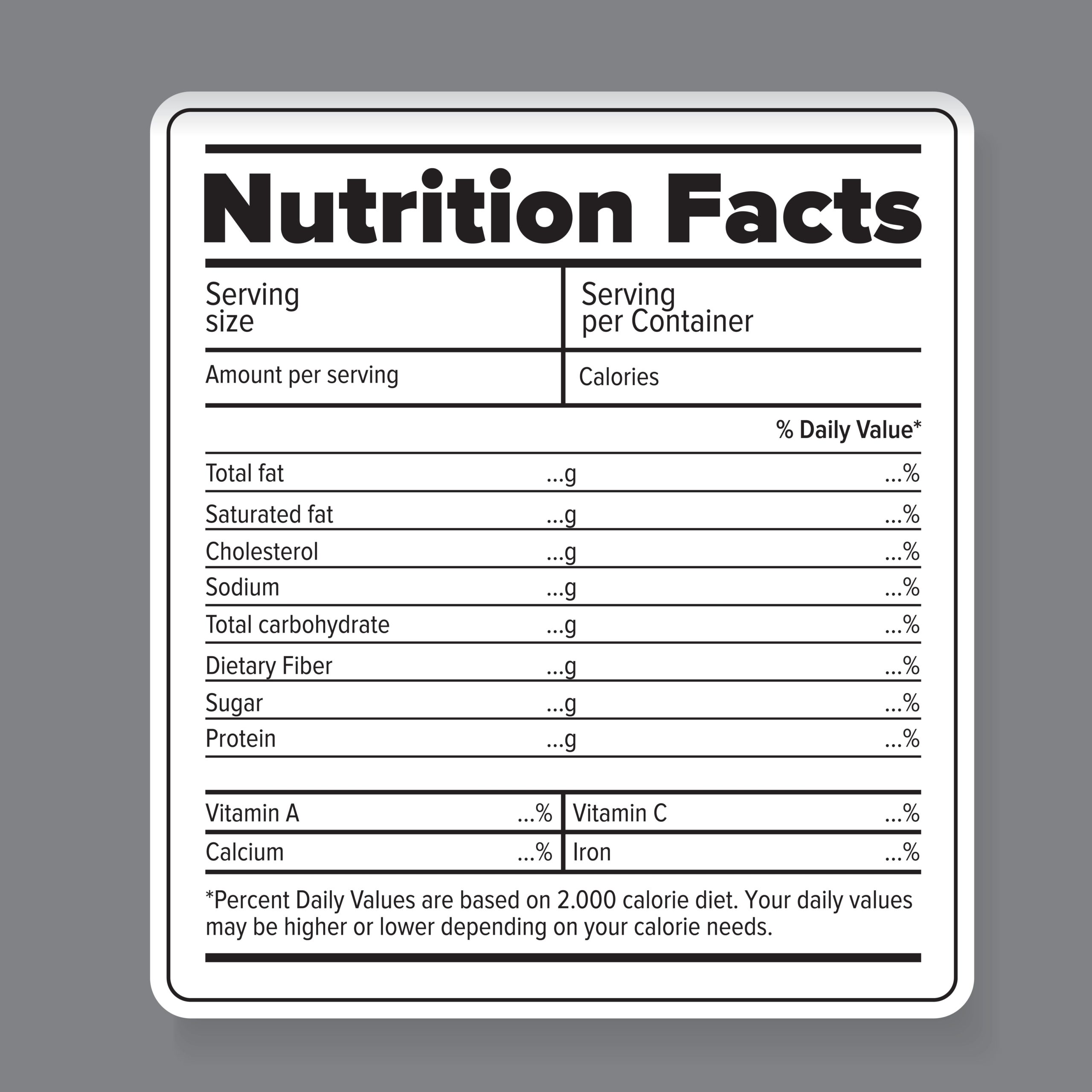If you haven’t already noticed, you will likely start to see some significant changes to how your food is packaged and sold. Rolling out Obama-era policies, the Food and Drug Administration (FDA) is requiring food makers to implement a new Nutrition Facts label, which will include the following information and updates [1]:
- Increasing the type size for “Calories”, “servings per container”, and the “Serving Size”
- Bolding the numbers of calories and serving size to better highlight this information
- “Added Sugars” in grams and as a percent of Daily Value will be included on the label
- Manufacturers must declare the actual amount, in addition to the percent of Daily Value, of Vitamin D, Calcium, Iron, and Potassium
- The list of nutrients that are required or permitted to be declared is being updated
Intention Behind Nutrition Regulations
What do all these changes mean for nutrition facts labels on your food products, and why is the FDA pushing for these changes? What do all these changes mean for nutrition facts labels on your food products, and why is the FDA pushing for these changes?
On May 20, 2016, the FDA announced the new Nutrition Facts label for packaged foods with the intention of making labels easier for consumers to make better-informed food choices. According to the FDA Commissioner, Scott Gottlieb, “Consumers are starting to have access to an updated label that’s based on current science and provides more information to empower them to choose healthful diets [2].”
Many other nutrition initiatives that began in the Obama administration are beginning to be implemented under the current Administration, including regulations that would require calorie labeling on restaurant menus in addition to the updated “Nutrition Facts” panels on food products.
These new initiatives, which have been termed as the FDA’s “Nutrition Innovation Strategy”, are attempts to tackle certain health conditions in the United States, including heart disease and obesity. The FDA is also considering other initiatives that would encourage food manufacturers to make their products healthier for consumers and giving incentives to those who do.
The Impact on Consumers
With public health concerns about preventable health conditions that impact millions of Americans, it is hopeful that the implementation of these new initiatives will create a positive change. However, it is yet to be fully understood as to how these new regulations will impact consumers.
[perfectpullquote align=”right” bordertop=”false” cite=”” link=”” color=”” class=”” size=””]Living a healthy lifestyle includes enjoying a variety of foods, engaging in movement and exercise, getting adequate rest, and learning how to effectively manage stress. [/perfectpullquote]
While the FDA has promoted that changes to the Nutrition Facts label will make it easier for consumers to make more informed choices about their food selections, these initiatives do little to bridge the disparities with overall access to quality food, healthcare, and nutrition education for all Americans.
Many of the common health issues that Americans are facing today, including obesity and heart disease, are multifactorial, and there is little research to show that changes to nutrition facts labels alone will make a difference in preventable disease. It is important to consider how some of these changes and increased focus on nutrition labeling may affect individuals who are struggling to achieve a healthy lifestyle.
Focusing on Ways to Stay Healthy
The potential issue with the Nutrition Facts label changes and other initiatives by the FDA is that this can create fear for many consumers about eating certain foods. An overemphasis on food labels and nutrition facts rather than learning how to enjoy a variety of many foods can take the joy away from eating and make it more complicated. It is possible to navigate your food choices by trusting your body and learning to enjoy a variety of foods intuitively.
Simply put, achieving a healthy lifestyle involves many more factors than just opting for the lowest calorie food items. The caloric value of food alone is not reflective of the nutrient content of a food. Living a healthy lifestyle includes enjoying a variety of foods, engaging in movement and exercise, getting adequate rest, and learning how to effectively manage stress.
Keeping focused on these big-picture goals, when it comes to health, will ultimately be much more effective than hyper-focusing on nutrition labels and calorie counts.
What are your thoughts on the new updates to the nutrition facts label?
The Meadows Behavioral Healthcare family of treatment programs treat more than just the symptoms of addiction, trauma, and co-occurring conditions, we treat the whole person from the inside out. This includes promoting all aspects of wellness as well as nutrition. Our holistic approach helps patients create a healthy, satisfying lifestyle for long-term healing.
References:
[1]: US Food and Drug Administration, “Changes to the Nutrition Facts Label”, https://www.fda.gov/Food/GuidanceRegulation/GuidanceDocumentsRegulatoryInformation/LabelingNutrition/ucm385663.htm Accessed 30 April 2018
[2]: The Washington Post, “One Year After Delaying Obama’s Nutrition Rules, Trump’s FDA says it will embrace them”, https://www.washingtonpost.com/news/wonk/wp/2018/03/29/one-year-after-delaying-obamas-food-reforms-trumps-fda-says-it-will-embrace-them/?noredirect=on&utm_term=.4b1be8c8a3fb Accessed 30 April 2018

